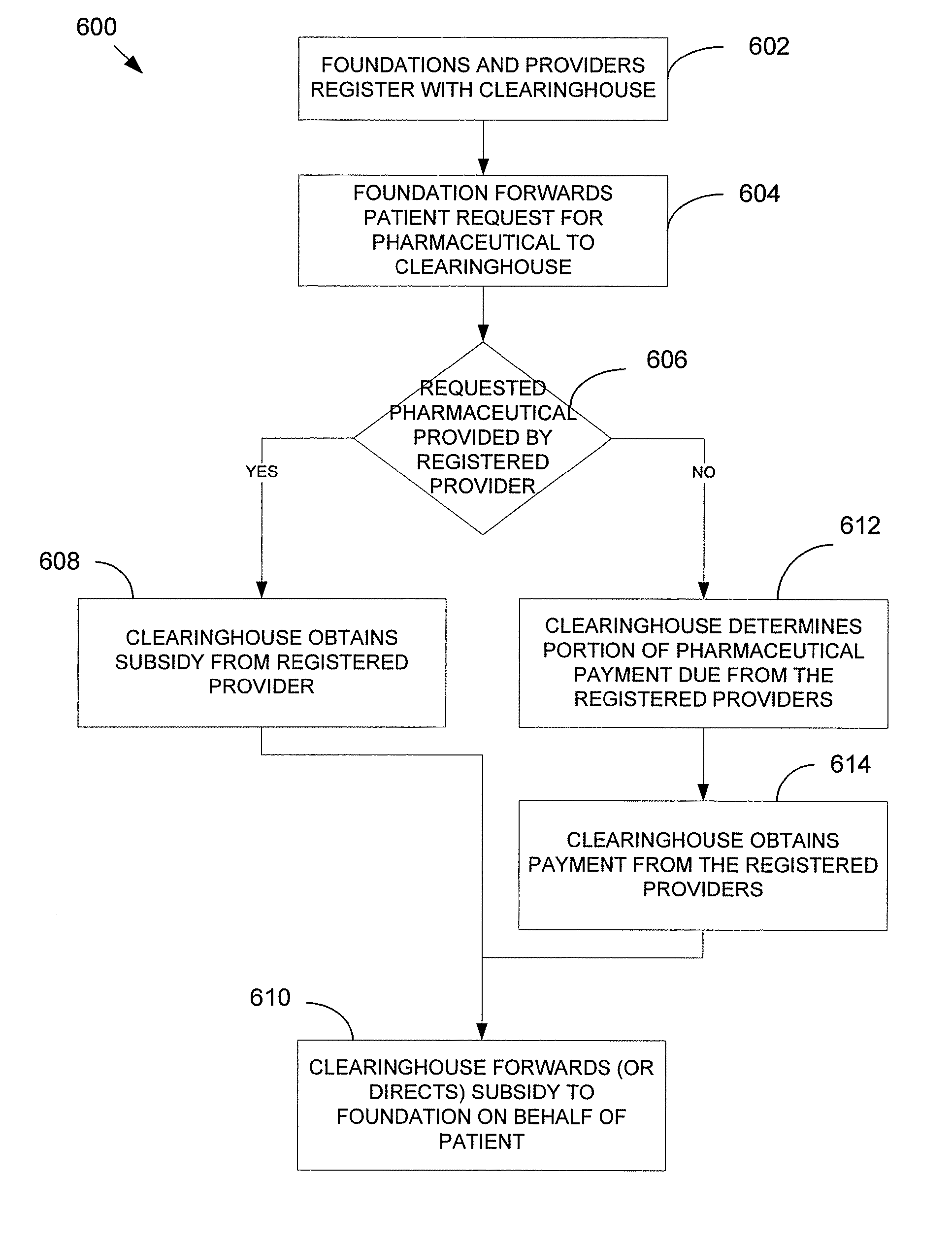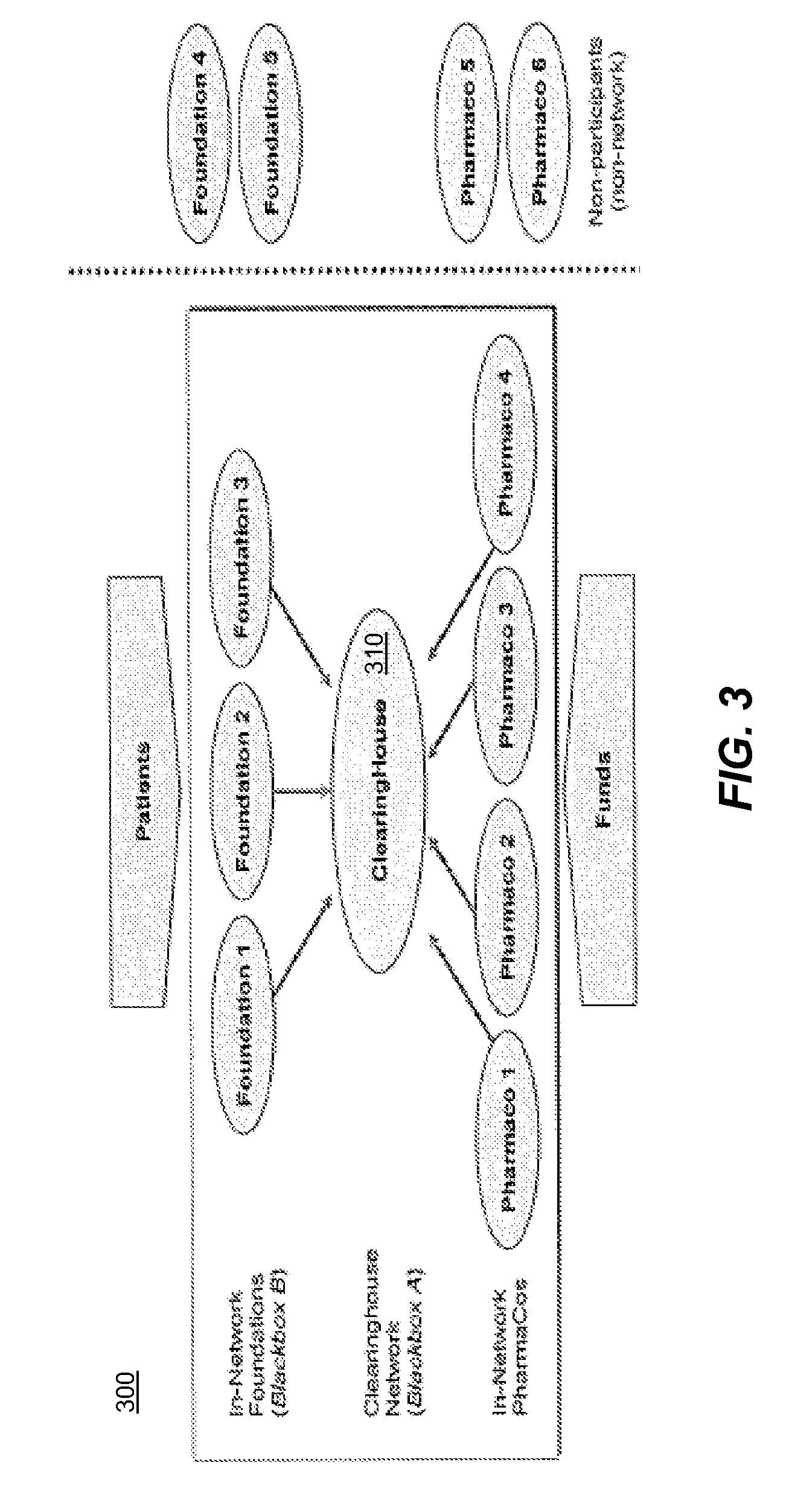Pharmaceutical clearinghouse method and system
a technology of a clearinghouse and a drug, applied in the field of pharmaceuticals, can solve the problems of product contributions, inability to fund other direct competitors that offer drugs no different from theirs relative to price or efficacy, and the number of limitations of this model have become eviden
- Summary
- Abstract
- Description
- Claims
- Application Information
AI Technical Summary
Problems solved by technology
Method used
Image
Examples
Embodiment Construction
[0052]A pharmaceutical clearinghouse establishes relationships with a set of foundations and a set of pharmaceutical providers. A foundation, as used herein, can be a charity, a third-party independent of the pharmaceutical providers, or any other entity recognized by the OIG as able to serve such role, in the present context. A pharmaceutical provider, as used herein, can be a drug company or manufacturer or other entity recognized by the OIG as able to serve such role, in the present context.
[0053]In response to the clearinghouse receiving a patient request for a pharmaceutical from a foundation, the clearinghouse obtains a subsidy from at least one provider and provides or otherwise directs the subsidy to the foundation. Systems, methods and computer program products can implement the clearinghouse in a variety of forms, without departing from the present invention. The subsidy can be cash, in-kind drug, or a combination thereof. What follows is one possible embodiment of various...
PUM
 Login to View More
Login to View More Abstract
Description
Claims
Application Information
 Login to View More
Login to View More - R&D
- Intellectual Property
- Life Sciences
- Materials
- Tech Scout
- Unparalleled Data Quality
- Higher Quality Content
- 60% Fewer Hallucinations
Browse by: Latest US Patents, China's latest patents, Technical Efficacy Thesaurus, Application Domain, Technology Topic, Popular Technical Reports.
© 2025 PatSnap. All rights reserved.Legal|Privacy policy|Modern Slavery Act Transparency Statement|Sitemap|About US| Contact US: help@patsnap.com



